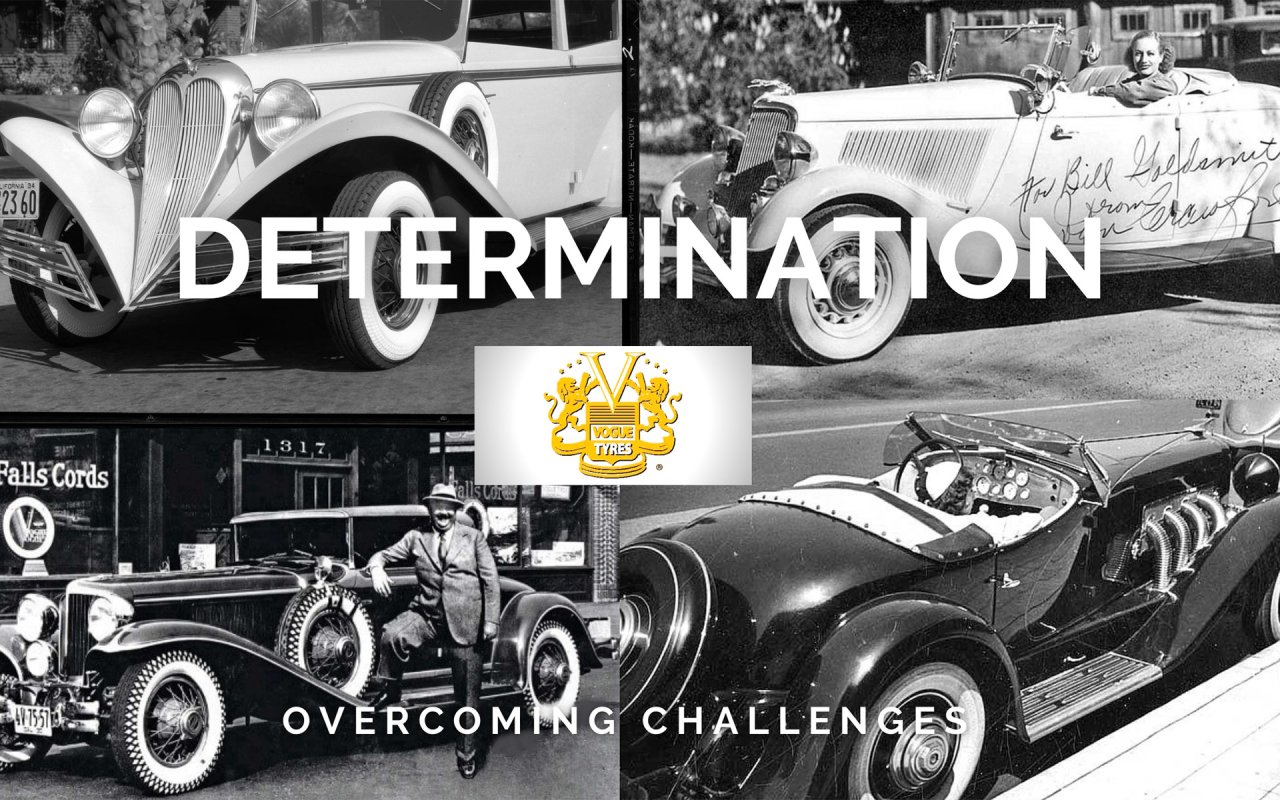It's fitting that the 1920s, known as the decade of change, ushered in an all-new concept: the Vogue whitewall tyre. By the time the 1930s rolled around, however, the global landscape had changed. The world had begun to enter the Great Depression.
Many companies would fold during the 1930s. But Vogue Tyre – with its grit and dedication to quality – would not be one of them.
THE GREAT DEPRESSION, AMERICAN RESILIENCE AND THE NEW DEAL
The 1930s began with more than one-quarter (15 million) of American workers unemployed, according to the History Network. Although many consider the stock market crash of October 29, 1929, to be the start of the Great Depression, financial instability had been growing for years.
Eventually, the country could no longer take the strain, and American’s were hit with a monumental economic crash. To make matters worse, the United States government did not offer unemployment at the time. The result was that everyone stopped spending, creating a downward spiral and hardship for millions of people.
The automotive industry was hit particularly hard during the Great Depression. Between 1929 and 1932, new car sales dropped by 75%, according to an article from the Boston Consulting Group. Furthermore, in 1932 alone, automakers shared a combined loss of $191 million ($2.9 billion by today’s standards). The financial strain forced more than half of the nation’s automakers to permanently close their doors.
In 1932, a new president, Franklin Delano Roosevelt, was sworn into office. He pledged to create a New Deal for the American people. And to make good on that promise, during his first year as president, Roosevelt passed 15 new groundbreaking laws under the New Deal umbrella.
Unfortunately, Roosevelt's New Deal did not end the Great Depression. But the campaign helped bolster the confidence of the American people. That confidence would give Americans the strength to keep going until the end of the Great Depression and the beginning of World War II.
VOGUE KEEPS ITS DOORS OPEN DURING THE GREAT DEPRESSION
In just one year, 1930, approximately 20,000 companies went bankrupt, according to the Economic Times.
Yet despite the odds, Vogue Tyre was able to stay in business throughout the Great Depression. In fact, the brand didn’t just survive – it expanded.
That success can partially be attributed to the image Vogue created for itself in the 1920s. During that decade, Vogue whitewalls had become the go-to tire for celebrities looking to be seen. And those celebrities, which included the likes of Clark Gable and Bob Hope, were still making (and spending) money during the Great Depression.
Also, during the 1930s, many cars had six tires (rather than four), creating an opportunity to sell more tires per vehicle. The two extra tires were mounted on the side fenders as spares. Well-off individuals often placed eye-catching, whitewall tires in that location to draw attention to their automobiles.
Thanks to the timeless style of the whitewall tire, Vogue was one of the few companies that was able to expand during the 1930s. The brand’s core values, including its dedication to customers and employees, also played a role.
Vogue’s success during the 30s laid the foundation for a nationwide network of wholesale partners, distributors, and independent tire dealers. That network is still flourishing today.
WORLD WAR II BEGINS AND THE GREAT DEPRESSION ENDS
As the 1930s drew to a close, the threat of war was on the horizon. World War II was set into motion when the Japanese bombed Pearl Harbor. Along with that military conflict came the end of the Great Depression, as companies everywhere rallied to create equipment to support the armed forces.
What was left of the automotive industry – primarily Ford, General Motors, and Chrysler – also began to rebound. According to an article from Automotive News, in 1941, GM sold a record-breaking 2,024,193 vehicles before converting its factories to support the war.
World War II required nearly all industries to shift to making military equipment and supplies. As a result, tire production would soon be halted.
But the change would not detour Vogue. Instead, it opened the door for a new chapter in the brand’s history.
THE DETERMINATION OF THE 1930S LIVES ON WITH VOGUE TYRE
The sense of determination that was born in the 1930s lives on in Vogue Tyre. A dedication to making a great product and a commitment to helping people have kept the company successful for over a century.
Since 1914, Vogue’s focus has been on its customers and its employees. Putting individuals first has helped the brand make it through the toughest of times, including the great depression.
That focus on people, combined with a devotion to making the highest-quality tires, is the company’s formula to over 100 years of success.
